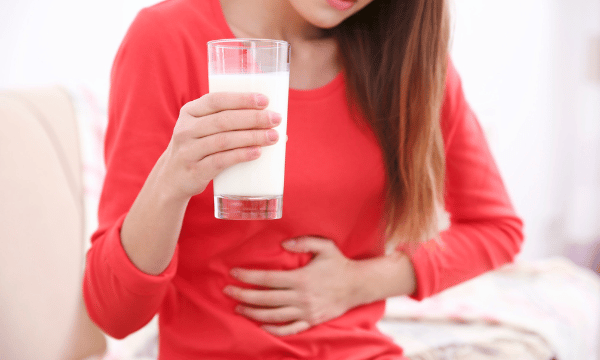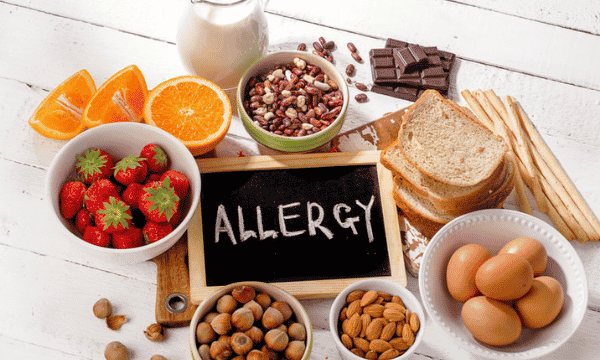What's The Difference Between An Allergy And Intolerance?
In this article, we answer the popular question, “what’s the difference between an allergy and intolerance.” Food allergies and food intolerances can have similar symptoms but are very different conditions.
A food allergy not only makes someone feel unwell, but can also have a life threatening reaction, called anaphylaxis.
Let’s look into this a little deeper.
What's the Difference Between an Allergy And Intolerance: Food Intolerance
A food intolerance is difficulty digesting certain foods and having an unpleasant physical reaction to them.
A reaction to a food intolerance takes place in the digestive system. It occurs when you are unable to properly breakdown food. The reason for the reaction could be due to enzyme deficiencies, sensitivity to food additives or a reaction to a naturally occurring chemical.

What Are The Symptoms of a Food Intolerance?
Food intolerance can cause symptoms such as:
- Abdominal Pain
- Cramps
- Bloating
- Wind
- Diarrhoea
- Nausea
- Indigestion
- Headaches
How Do You Diagnose a Food Intolerance?
The symptoms usually occur within a few hours of eating the food.
It can be difficult to diagnose a food intolerance as the symptoms are typical of many other conditions.
The best way is to monitor the symptoms and the foods you eat. See what happens when you cut out the suspected food for a while and then reintroduce it into your diet. Try keeping a diary of the foods you eat and any symptoms.
Types of Food Intolerances
Some examples of types of food intolerances include:-
- Gluten
- Wheat
- Lactose
- Caffeine
- Additives
Food intolerances should be taken seriously. Although they are not life-threatening, the long-term effects can lead to you becoming very ill.

What's the Difference Between an Allergy and Intolerance: Food Allergy
A food allergy is a reaction by the immune system to a food protein that triggers an allergic reaction. The immune system controls how the body defends itself. For example, if you have a milk allergy, the immune system identifies the milk as an invader or allergen. The immune system overreacts by producing antibodies called Immunoglobulin E. These antibodies travel to cells that release chemicals, causing an allergic reaction.
What Are The Symptoms of a Food Allergy?
A food allergy can cause symptoms such as:
- Breathing problems
- Throat tightness
- Coughing
- Itching
- Hives
- Swelling
- Vomiting
- Diarrhoea
- Nausea
- Drop in blood pressure
- Anaphylaxis
These symptoms may happen between minutes and hours of an allergen being encountered. Unlike food intolerance, eating a microscopic amount of the food, or sometimes even touching or inhaling it, could lead to anaphylaxis. So anyone with a food allergy must avoid the problem food entirely.
More information regarding allergies and how to control them can be found at Allergy UK
The 14 Food Allergens
- Fish
- Crustaceans
- Peanuts
- Nuts
- Milk
- Celery
- Cereals containing gluten
- Eggs
- Lupins
- Molluscs
- Mustard
- Sesame Seeds
- Soybeans
- Sulphur Dioxide
You can discover more about these allergens on our Highfield Level 2 Award in Food Allergen Awareness one-day course.
What Is Anaphylaxis?
Anaphylaxis is a severe and potentially life-threatening reaction to a trigger such as an allergy. It usually develops suddenly and then gets worse very quickly. Symptoms of anaphylaxis may include difficulty breathing, dizziness or loss of consciousness. Without immediate treatment, such as an injection of epinephrine (adrenalin) and expert care, anaphylaxis can be fatal.
If you have a question or enquiry about food safety, please call the team on 01452 502113 or complete our enquiry form.
Find this helpful?
Signup to our email notifications to receive alerts when we publish new blogs. We promise not to spam your inbox, you will just get a short snappy intro to Health and Safety articles we think you will love.
"*" indicates required fields

The Ultimate Fire Safety Checklist
If you’ve got a question or query, please contact our super friendly team, they will be delighted to help you!
Simply get in touch via phone or email.

Free
Resources &
Downloads
Informative. Useful. Practical.
Here at Envesca we believe that we are good at giving proactive, sensible and useful advice. Below you will find some free resources that you can download on a host of subjects that will help you and your business.
Training Available
Envesca offer a number of different training courses, which offer advice and guidance on these topics.




